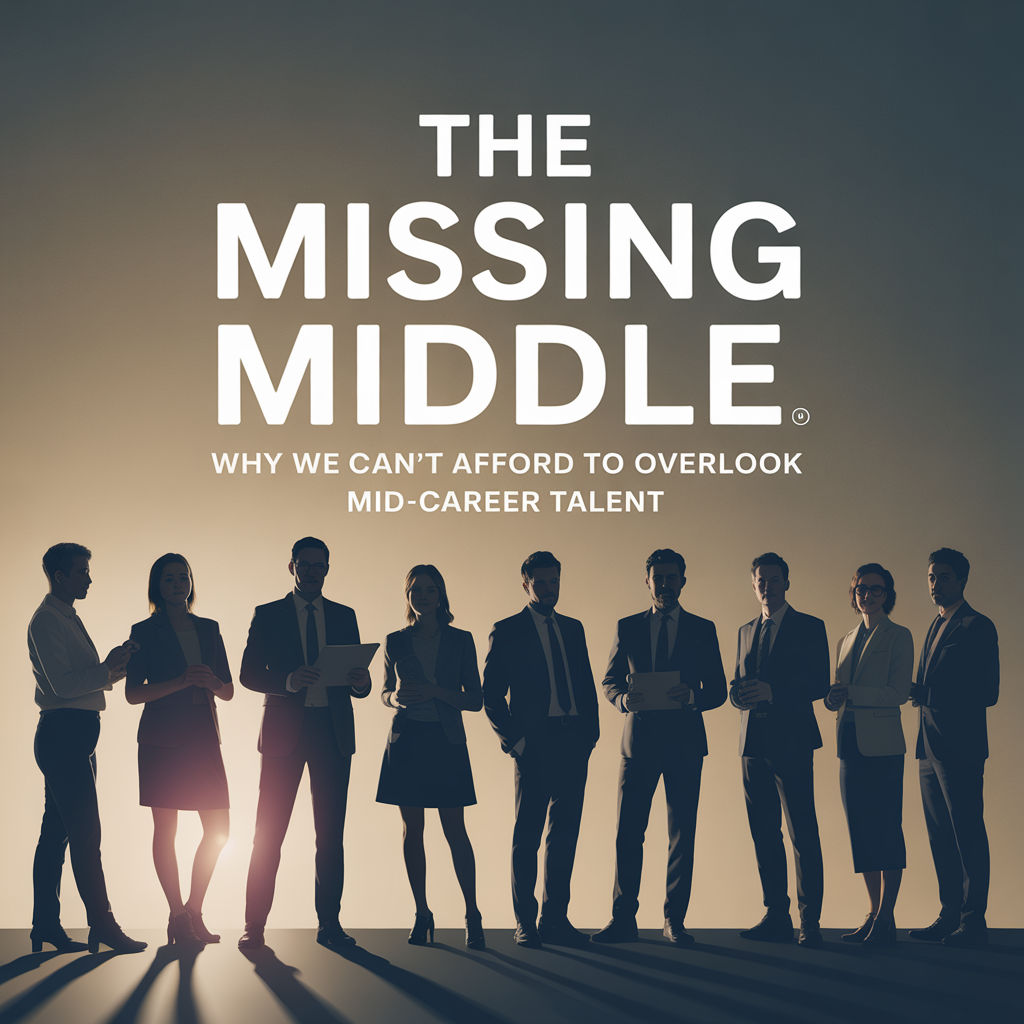Thursday, October 30, 2025
Thursday, October 30, 2025

Lisa MacMillan:
We’re used to talking about early-career pipelines and graduate recruitment. We’re equally comfortable celebrating late-career leaders who’ve made it to the top.
But there’s a growing group in the middle experienced, capable, and willing who remain almost invisible in today’s talent strategies.
Three major 2025 reports from the Centre for Social Justice, the UK Government’s Get Britain Working white paper, and the World Economic Forum all point to the same truth: we can’t afford to overlook prime-age and midlife talent any longer. The demographic and economic cost is simply too high.
The Wake-Up Call in the Data
The Centre for Social Justice’s Midlife Mission report and the UK Government’s new employment strategy both shine a light on a deep pool of under-utilised talent. Many in their 40s, 50s and early 60s are locked out of meaningful work, despite having skills in high demand.
Globally, the WEF’s Future of Jobs Report 2025 mirrors this pattern. Employers across every region report critical skills gaps yet older professionals are often excluded from reskilling programmes or overlooked in succession planning. The OECD’s Employment Outlook 2025 warns that, without urgent action, ageing populations could slash GDP per capita growth by as much as 50% by 2060.
The data is clear: this isn’t a marginal issue. It’s a structural one.
Why Midlife Talent Still Gets Overlooked
The reports offer different reasons: recruitment bias, rigid job design, and a lack of integrated health and career support. From my own client work across Europe, Asia, and the UK, I’d add another: the narrative problem.
Too often, corporate storytelling focuses on youthful innovation or celebrates the long-serving leader at the end of their career. Midlife hires rarely make the spotlight. Yet they’re the ones who can combine deep expertise with adaptability the very combination organisations say they need in a volatile market.
The Leaders’ Risk
For leadership teams, ignoring this talent segment isn’t just a missed opportunity it’s a business risk.
As the WEF warns, adaptation is as much about shifting perception as it is about skills. That’s where leadership communication plays a defining role.
The Communications Leadership Moment
This is where communications leaders, especially those working alongside the CEO and CHRO, can make a difference:
A Global Issue, Local Solutions
Yes, the Centre for Social Justice and Get Britain Working papers are UK-based. But their recommendations from better public-private collaboration to integrated career-health services are relevant everywhere. Countries from Singapore to Canada are exploring similar models.
The most forward-thinking leaders I work with aren’t waiting for national policy. They’re building internal pathways now: re-entry programmes, cross-functional mentoring, and targeted learning for experienced hires.
Why This Matters Now
It’s tempting to think we’ve heard all this before. But 2025 feels different. The convergence of demographic pressure, economic risk, and skills shortages is forcing the conversation into the mainstream.
For communications leaders, this is more than a workforce planning issue. It’s a brand credibility one. If you talk about inclusion but your talent strategy quietly sidelines a generation, stakeholders will notice employees, customers, investors, and the media.
The Opportunity Ahead
The reports are clear: countries and companies that embrace a multi-generational, adaptable workforce will fare better economically and socially over the next decade.
This isn’t just a policy challenge. It’s a storytelling one. And in that, communications has the power to lead.
2025 might finally be the year the “missing middle” gets its place in the talent narrative. But only if leaders choose to put it there.
+++
Written by: Editor
© 2025 Stratpair Ltd., trading as Strategic. Registered in Ireland: 747736